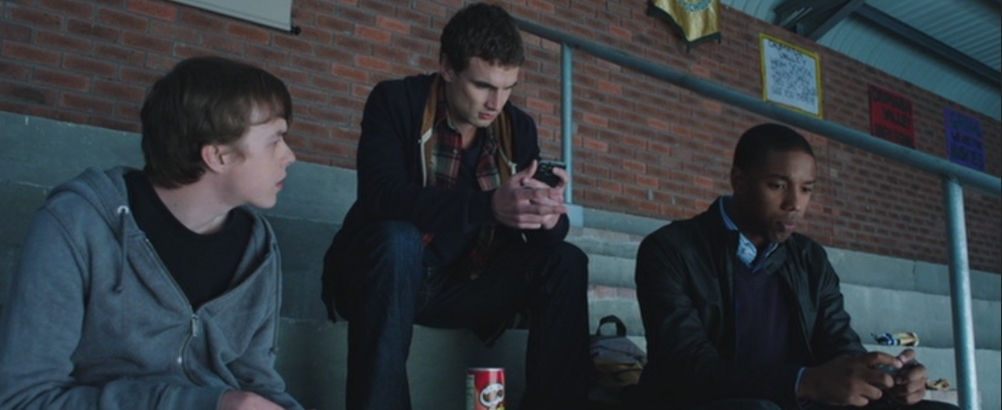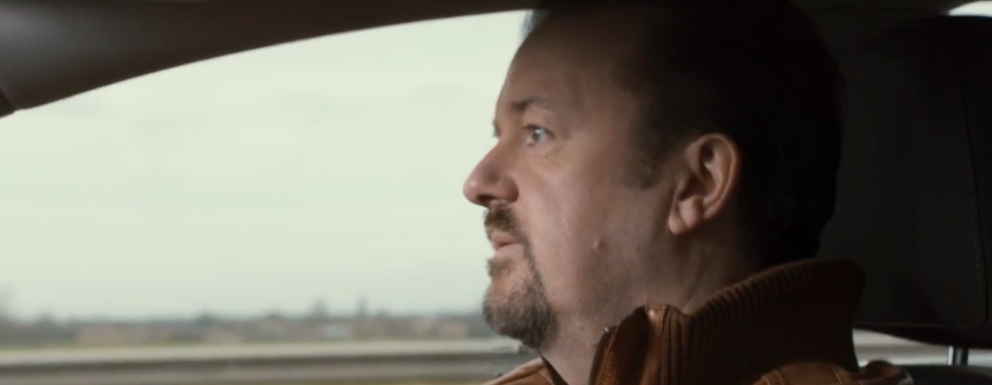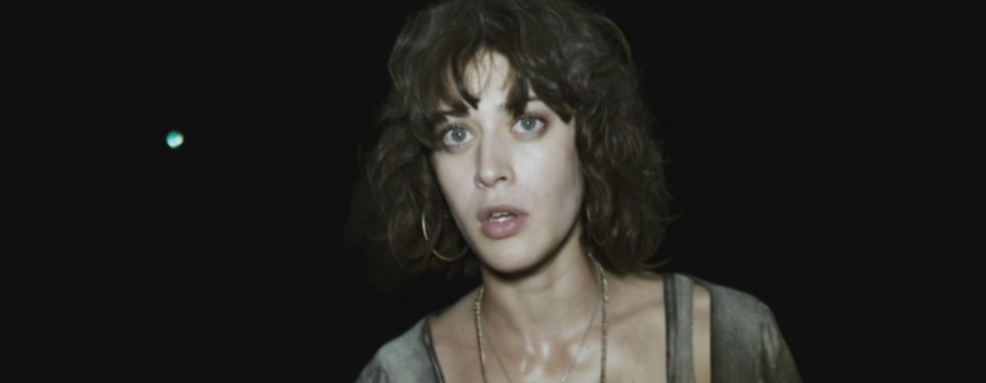The found footage ‘genre’ is much maligned. For many viewers the format is synonymous with shaky-cam, insufferable characters and motion sickness. With the sixth and (hopefully) final installment of the PARANORMAL ACTIVITY series barely troubling the US box office in 2015, commentators have suggested that this ‘genre’ is tired and ready to die. But this is a mischaracterisation.
What is found footage? Rather than being a ‘genre’ in the sense of science fiction or romantic comedy, it’s more accurately described as a technique or format. In the tradition of epistolary novels such as Bram Stoker’s DRACULA, found footage films tend to feature discovered video recordings, arranged to form a coherent story. Found footage is therefore not theoretically restricted to any formula, theme or genre. For a true example of a now-tired genre you need look no further than young-adult dystopia which, kicked off by the solid HUNGER GAMES series in 2012, has recently cannibalised itself in the form of cliché-ridden X-Men knockoff THE DARKEST MINDS. When compared with this sickly specimen, the sharp edge of found footage – with its slippery genre identity, eager uptake of new technology and unique capacity to delve into the nature of filmmaking itself – seems alive and kicking.
GONJIAM: HAUNTED ASYLUM, screened this month as part of the London Korean Film Festival, is a solid showcase of the found footage toolbox. But before we discuss this latest work from GIDAM director Jeong Beom-sik, it’s worth exploring why filmmakers choose to use found footage in the first place.
Reality Ensues
The premise common to every found footage film is the illusion that the footage we are seeing is real. This pretense often extends to the promotion of the films, as seen in the marketing for THE BLAIR WITCH PROJECT (1999). Online searches for the film brought up a website with staged newsreel footage and interviews, and ‘missing’ posters of the actors were distributed at Sundance. In a similar move, actors in the controversial 1980 video nasty CANNIBAL HOLOCAUST (thought by many to be the first ever example of found footage) signed contracts that prevented them from appearing in any media for a period of one year after release. This was a tactic that worked rather too well, as the director Ruggero Deodato was later accused of murdering his cast – and could not easily prove they were still alive.
‘Real’ footage – whether in the style of newsreels, home video, security camera or documentary – serves to ground us in a story which might not otherwise be believable. Naturalistic filming allows a director to establish a familiar world and then to introduce abnormal elements. This is one of the reasons that found footage is most frequently seen in the horror and (to a lesser extent) science fiction genres. It is informative to look at conventional films which choose to use found footage techniques to convey something specific. For example, Neil Blomkamp’s sci-fi actioner DISTRICT 9 sets the scene with news footage, interviews and a documentary style – grounding us in a world where aliens really did land in South Africa thirty years ago. Compare this to Josh Trank’s CHRONICLE, a sci-fi found footage film which features three teenagers who develop superpowers. Released in 2012, with the X-Men franchise shifting into prequel mode and the Marvel Cinematic Universe already building to its Phase One finisher AVENGERS ASSEMBLE, the story of CHRONICLE sounds rather too familiar on paper. But it works because the film – which is shot almost entirely on handheld cameras – appears to take place in the real world. There is no Hollywood gloss. The three central actors were (then) relatively unknown*. The characters talk like real teenagers, think small, have otherwise mundane lives. When we watch this facsimile of our world through the lens of a handheld camera, it feels like something which could have happened to us. Having grounded us in the real world, the film can then credibly ask the question: what would actually happen if teenagers got superpowers?
In a similar vein, the PARANORMAL ACTIVITY series uses the primary gimmick of security-camera-like footage to show us a normal world which is later invaded by demonic elements. This type of static filming, as distinct from a moving handheld camera, is an excellent way to establish the mundane everyday – showing us an incredibly inert, even boring world which is then shattered by something alien and frightening. The technique is briefly used in Lynne Ramsay’s masterpiece YOU WERE NEVER REALLY HERE, where we see a quiet house through the lens of the security cameras – before a frightening, dangerous element (our protagonist) enters the frame and proceeds to wreak havoc.
Again and again, we see found footage techniques used to ground a story and give it a sheen of the real – with greater or lesser success. But while realism is the most obvious element these techniques can add, it is not always the most important.

Creating Empathy
What separates found footage from mockumentary? At first glance they seem to have a lot in common. Mockumentaries like THIS IS SPINAL TAP and (more recently) DAVID BRENT: LIFE ON THE ROAD supposedly depict real life events, but – crucially – with a comic edge. Found footage horror tries to make you scream. Mockumentaries try to make you laugh. According to Angela Carter, ‘Comedy is tragedy that happens to other people.’ The mockumentary format is all about setting up an absurd situation (or person), and maintaining distance so that you can laugh at it/them. DISTRICT 9 begins a little like this, then moves away from the mockumentary format as the main character becomes more relatable. Mockumentary filming is documentary-like, distant and objective, and the cameraperson is rarely seen and is not usually a character in the film.
In contrast, the most effectively scary horror films aim for the opposite effect. Horror, more than any other genre, relies on empathy. The more you empathise with a protagonist, the more terrified you will be. There’s a reason that found footage is most strongly associated with horror. POV-camera footage can do something that other techniques cannot – it can allow you to experience the story directly through a character’s eyes. What could be scarier than that? THE BLAIR WITCH PROJECT is a famously unsettling example of this style, but the gut-churning 2007 Spanish horror, [REC], is one of the most out-and-out terrifying.
Of course, showing a story from a character’s point of view can be interesting for other reasons. CHRONICLE, though not a horror film, plays with the audience’s empathy through the use of shifting viewpoints. The point of view is dominated, early on, by the downtrodden Andrew (Dane DeHaan) – with the effect that we not only see events through his eyes, but understand that he doesn’t really see himself as a character in his own story. His newfound abilities allow him to levitate the camera, so that he can finally step into the frame – and at the time, it’s a joyful moment. But from that point other viewpoints begin to seep in, encouraging the audience to shift their sympathy. It’s one of the film’s sharpest moves, and it’s a shame we don’t see this aspect of found footage exploited more often.

Tools Of Suspense
An immortal tactic in horror cinema is to fill the frame with gloom and dark spaces out of which anything could emerge. This has the effect that the audience will start worrying about the monster before it even appears, and sometimes even if it doesn’t. (For a gleeful romp through this trope, see Hammer’s 2012 adaptation of THE WOMAN IN BLACK.) Found footage is particularly equipped to additionally make use of the opposite approach – narrowing the field of view so that the audience, claustrophobically, can only ever look at one thing. For a non-found footage example of this we can look to the superb British horror THE DESCENT, where at times both the narrow beam of a torch and the viewfinder of a night-vision camera are used to control the field of view, and the audience, paralysed, can only wait for the threat to appear. The final scene of [REC], a superlative example of the trope, is one of the scariest things to come out of the found footage stable.
Found footage also presents manifold opportunities to control what viewers don’t see. Most people will have felt the relief of finally seeing the monster – in films like ALIEN, nothing is scarier than the unknown, and when the creature finally appears the tension inevitably eases. Sometimes seeing the monster is actually a disappointment. Inept filming by fleeing camera crew is a great excuse to hide your monster until the last possible moment, as we see in CLOVERFIELD. In THE BLAIR WITCH PROJECT the monster is all the more unsettling because it doesn’t appear at all. In shared-screen films like UNFRIENDED and FRIEND REQUEST, events unfold entirely on laptop screens, through Skype conversations and online messaging. Filmmakers can then hide the picture with other windows and simulate delays or distortions. Opportunities to create tension only multiply with the advent of new technology, which found footage has always embraced with open arms.

Why are you still filming?
We’ve looked at the found footage toolbox and seen how these techniques can ground us in reality, and create empathy and suspense. But it’s worth acknowledging that, since the camera plays a role in the narrative, found footage films present a unique thematic opportunity: to discuss our relationship with the camera, and with filmmaking itself. In CHRONICLE, more than once the main POV character Andrew is asked why he is filming – doesn’t he think it creates a barrier between him and his life? Andrew, defensive and closed off from a lifetime as a human punching bag, replies ‘Maybe I want a barrier.’ The teenagers of UNFRIENDED refuse to close their laptops – the source of the film’s threat. This may frustrate some viewers, but it’s a timely commentary on a generation that can’t switch off. Micah, the boyfriend in PARANORMAL ACTIVITY, won’t turn his camera off no matter the circumstances, which effectively convinces us that he deserves to die (although this probably wasn’t intentional). And the most interesting thing about CANNIBAL HOLOCAUST is its focus on the exploitative side of documentary-making – where American filmmakers seek to impose their own sensationalist narrative on the tribes of the Amazon rainforest – and in doing so, spread destruction. One of the most chilling moments of the film takes place during the iconic impalement scene. But it isn’t the impalement itself that makes you shudder. It’s the delighted face of the lead documentarian, Alan (Gabriel Yorke), who only resumes a mask of civilised horror when the cameraman reminds him, ‘Watch it Alan – I’m shooting.’ This unwavering, difficult film would make a good companion piece to NIGHTCRAWLER (2014), which likewise examines the attempts of a cynical media to feed the escalating needs of a bloodthirsty public.
Literally No Money
Last but not least, found footage is cheap. THE EQUALIZER 2, one of the more modest blockbusters to come out this year, cost over $125 million – whereas at the higher end we see AVENGERS: INFINITY WAR, with a staggering budget of up to $400 million (estimates vary). Compare this to THE BLAIR WITCH PROJECT, which had a budget of only $60,000 –excessive in the light of PARANORMAL ACTIVITY’s meagre $15,000 price tag. Both films made hundreds of millions of dollars (and are variously praised and bemoaned for repopularising the format). If a found footage film has distribution, it’s very likely to make a profit – easy money compared to the big blockbusters, which really need to bring in at least twice their budget to be worth it.
So now we know why found footage films still arrive in our cinemas year on year. But that isn’t to say that the medium is perfect.

The Pitfalls of Found Footage
Films in general fail for a lot of reasons. Films can be boring, irritating or outright offensive. But there are several diseases that the found footage format is particularly prone to.
A cash-led existence. As mentioned, one of the upsides of found footage is that it is cheap to make and will always make money, so anyone with a good idea can have a crack at it. Unfortunately, one of the pitfalls of found footage is that it is cheap to make and will always make money, so anyone with a bad idea can have a crack at it. If you look at the PARANORMAL ACTIVITY series, you notice that with each entry in the series the budget rises, but the review aggregator score drops and drops. Clearly the money wasn’t going into the writing.
Irritating characters. One of the most common complaints about CLOVERFIELD and M. Night Shyamalan’s THE VISIT is that the people you have to spend time with are supremely annoying. And although the first PARANORMAL ACTIVITY is a solidly creepy piece of work, Micah, the boyfriend, is an example of a character who is genuinely too stupid to live. If you begin to root for the monster, the movie has done something wrong. Unless it’s a Guillermo del Toro film.
Excessive realism. As mentioned, PARANORMAL ACTIVITY is not a bad film. It creates tension by presenting us with footage of normal life, occasionally punctuated by something frightening – or, as the critic Mark Kermode put it, the film deals in ‘Quiet, Quiet, BANG’ scares. The film works because it sets up an intriguing story, follows the rising tension between the two central characters and drip-feeds us regular, creepy scares. The issue with PARANORMAL ACTIVITY 2 (and most of the later films) is that the filmmakers understood that the first film was successful, but didn’t apparently understand why. They therefore simply expanded the Quiet-Quiet-BANG format. The BANGs were louder. The ‘quiets’ were longer. This approach does little to rack up the tension, but does leave you a) bored and b) deaf.
Why are you still filming? In found footage, characters need a good reason to be filming. If you’ve started to wonder why they haven’t turned the camera off, the odds are that the film isn’t working for you. You are probably bored. You may also be deaf, but this will depend on the film.
This seems damning. But you’ll notice that none of these afflictions is confined to the found footage genre. For example, many TRANSFORMERS films could be accused of being boring, soulless cash cows. They feature irritating characters like Shia LaBeouf. And it’s not uncommon to wonder why Michael Bay is still filming.
*Ironically, two of them, Dane DeHaan and Michael B. Jordan, went on to star in big summer superhero films. Michael B. Jordan, most notably, plays the villain Killmonger in BLACK PANTHER – which racked up approximately $1.346 billion at the world box office, and is (at the time of writing) the ninth-highest grossing film of all time.

